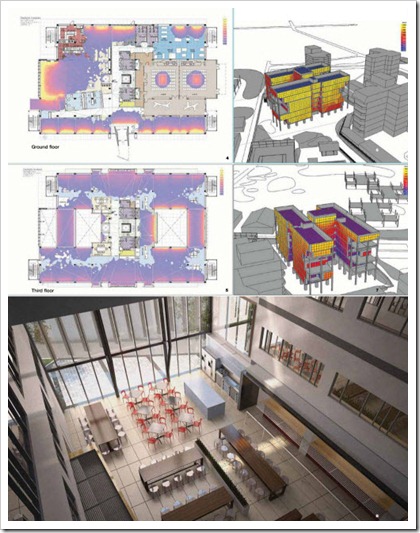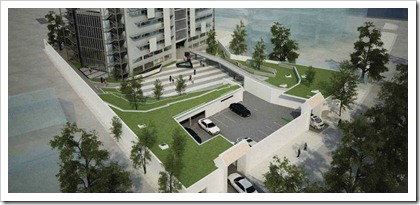
When the United Nations (UN) launched its global reform initiative 'Delivering as One', Vietnam was selected as one of eight pilot countries. Its new office building, currently under construction in Hanoi, is the most ambitious of the One UN House projects and is a demonstration of the UN's broader commitment to a Green agenda.
Though the UN has an established approach of co-locating the various UN organizations such as WHO and UNICEF in the same building wherever possible, it had been struggling to do so in Vietnam, where its offices were scattered around central Hanoi, resulting in operational frustrations and inefficiencies.
The new reform initiative required "one house", a building that by definition would target efficiency and sustainability.
The UN engages in capacity-building whenever possible. Vietnam is one of the five countries most vulnerable to climate change and currently spends 2 percent of GDP on disaster risk management. The government had begun to set out its climate change programme but had few firm guidelines in place to encourage Green development. Meanwhile the Vietnam Green Building Council had just announced its intention to create the LOTUS Green building certification system.
With the arrival of the LOTUS there was an opportunity for the Green One UN House to become a pilot project not just for the UN but also for the new rating tool.
The UN decided to take the opportunity to renovate and occupy a former apartment building on Kim Ma Street. A preliminary survey and design was carried out by architects at Chulalongkorn University in Bangkok and then, as per UN rules, the design was sent out to open international tender according to a highly detailed project brief.
GHD, the selected architects, have created an imaginative re-working of the building and the site. Respecting LOTUS from the outset, they have focused on the UN's key goals of efficiency, disaster resilience and excellent internal environment.




The starting point for this project was the existing building. Early studies showed a sound structural framework; so to save construction costs the architects have retained 94 percent of the existing structure, even incorporating balconies, to help break up the facade and provide intimate interior spaces. Solutions such as their handling of the originally unwieldy-seeming H-shaped plan and the 'found elements' bring real interest and spatial benefits to the resulting layout.
Hanoi's climate is harsh, with high humidity levels persisting through chilly winters and broiling summers. Grey skies are the norm, with a high glare factor. The designers maximize daylight whilst controlling temperature with a large atrium, internal light wells, and external shading elements, all decreasing heat loading and glare. The original non-structural brick walls will be replaced with tile-clad aerated blockwork to insulate and minimize ongoing maintenance. Windows are double-glazed aluminium suites, insulating and also blocking noise from the busy main thoroughfare.
Internally the specification calls for low-VOC paints and joinery and a focus on rapidly renewable materials including bamboo, rubber, and linoleum. Selected carpets have a high-recycled content and can be recycled in future.
The project is also planned both to anticipate and mitigate weather extremes, a practical strategy given the area's increasing flood potential. The UN ensured that vital operations are located on upper floors; meanwhile the site is designed to improve stormwater runoff with extensive greening, increasing permeability and storage capacity. Heat climate is reduced as much as possible with landscaping, solar roof panels and light-coloured paving.
The UN's project team has succeeded on many levels in a challenging environment. Set to a tight budget, the project demonstrates that Green doesn't have to be cost-prohibitive, The UN project management team explains it as "focusing money in the right areas—some options may be more expensive to implement initially than others, but it's not wasted money". They've also convinced the different agencies that going Green can improve project delivery. Because an excellent internal environment was targeted in the certification it persisted throughout the project planning stages, compared to typical procurement, which in their experience tended to 'cut corners for the people who are going to work there". And the project will be the first local building to showcase so many highly Green strategies in one building, including significant use of solar voltaic panels, a green roof, external shading devices, energy and water sub-metering and water-saving fixtures.
LOTUS has benefitted both from the association with such a high-profile pilot project, and the ongoing testing that such projects bring to a new certification system. The solar voltaic installation will be the first of its type on an urban project and will create a pilot case all on its own in regards to working with Vietnam's main energy provider. And the lively participation of many UN organizations has ensured an ongoing investment by building users and operators.
0 comments:
Post a Comment